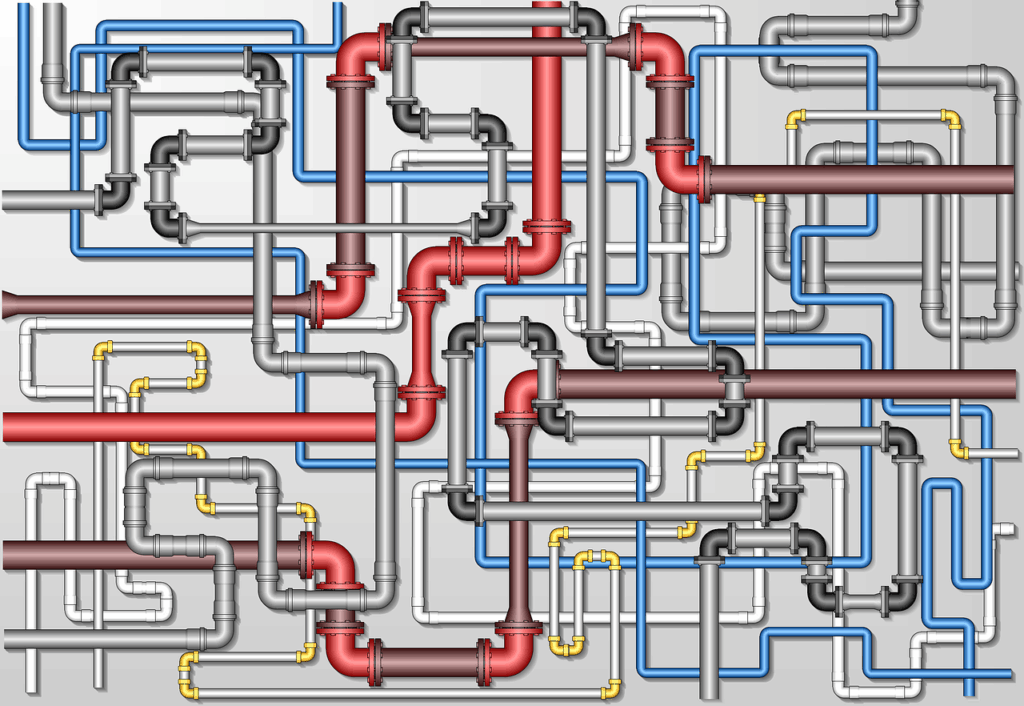In the world of sales, you might often hear the term “pipeline” being used. While it’s a common term, there’s often confusion about what it truly means, even among experienced professionals.
Some think it’s just a list of potential clients, while others see it as a fancy to-do list. In reality, a sales pipeline is much more than that. Let’s break down the concept in simple terms, making it clear and understandable—even for an 8th grader.

What Is a Sales Pipeline?
Imagine you’re organizing a school fundraiser. You start by identifying people who might donate, then you reach out to them, explain the cause, and finally, collect the donations. This step-by-step process is similar to what salespeople do when trying to sell a product or service.

A sales pipeline is a visual representation of this process. It outlines each stage a potential customer goes through, from the first contact to the final sale. By organizing prospects into different stages, sales teams can track progress and identify where each deal stands.
The Stages of a Sales Pipeline

Understanding the stages of a sales pipeline is crucial for any business aiming to streamline its sales process and enhance revenue generation. Typically, a sales pipeline consists of several key stages, starting from initial contact and lead qualification, moving through needs analysis and proposal presentation, to negotiation, closing the deal, and ultimately, post-sale follow-up. Each stage represents a critical step in nurturing a prospect into a loyal customer. The sales teams that are able to master the intricacies of each phase will be better equipped to identify bottlenecks, optimize their sales strategies, and ultimately drive more consistent and predictable sales success.
While the exact stages can vary depending on the business, most sales pipelines include the following steps:
1. Prospecting
This is the stage where salespeople identify potential customers, also known as leads. They might use methods like cold calling, attending networking events, or researching online to find individuals or companies that could benefit from their product or service.
2. Lead Qualification
Not every lead is a good fit. In this stage, salespeople determine whether a lead has the need, budget, and authority to make a purchase. This helps prioritize efforts on the most promising prospects.
3. Initial Contact
Once a lead is qualified, the salesperson reaches out to introduce themselves and the product or service. This could be through a phone call, email, or face-to-face meeting.
4. Needs Assessment
Here, the salesperson asks questions to understand the lead’s specific needs and challenges. This information is crucial for tailoring the sales approach and demonstrating how the product or service can provide value.
5. Presentation or Proposal
Based on the needs assessment, the salesperson presents a solution, often in the form of a proposal or demonstration. This stage is about showing how the offering meets the lead’s needs.
6. Negotiation and Handling Objections
Leads might have concerns or objections, such as price or terms. In this stage, the salesperson addresses these issues, negotiates terms, and works to find a mutually beneficial agreement.
7. Closing the Deal
If all goes well, the lead agrees to the terms, and the sale is finalized. Contracts are signed, and the product or service is delivered.
8. Post-Sale Follow-Up
After the sale, it’s important to maintain a relationship with the customer. This can lead to repeat business, referrals, and valuable feedback.
Why Are Sales Pipelines Important?
With a well-defined sales pipeline, companies can enhance their ability to forecast sales accurately, allocate resources efficiently, and identify potential issues early in the sales cycle. Furthermore, sales pipelines facilitate better communication and collaboration within sales teams, ensuring that every team member is aligned and focused on achieving common goals. Sales pipelines empower businesses to optimize their sales strategies, improve conversion rates, and ultimately, achieve consistent revenue growth. Here’s why sales pipelines are essential for any sales team:
1. Organization and Clarity
A structured pipeline helps sales representatives see where each prospect stands in the sales process. This clarity ensures that no lead is overlooked and that each opportunity is given the appropriate attention.
2. Enhanced Forecasting
By analyzing the stages where prospects are in the pipeline, sales managers can predict future sales more accurately. This foresight aids in setting realistic targets and allocating resources effectively.
3. Increased Efficiency
A clear overview of all ongoing deals allows salespeople to prioritize their efforts on high-potential leads, reducing time spent on less promising prospects. This focus enhances productivity and drives better results.
4. Improved Team Collaboration
Shared visibility into the pipeline helps team members coordinate their efforts, share insights, and support each other in moving deals forward. This collective approach leads to a more cohesive and effective sales team.
5. Customer Satisfaction and Retention
A well-managed sales pipeline ensures a consistent and positive experience for prospects. Satisfied customers are more likely to return and recommend the business to others.
Common Misconceptions About Sales Pipelines

As you may now have recognized, sales pipelines are a fundamental component of successful sales management and play a pivotal roAs you’ve likely recognized by now, sales pipelines are a core element of effective sales management. They play a crucial role in driving growth and sustainability by providing a structured, repeatable way to manage sales opportunities. But while we’ve covered what a sales pipeline is, it’s equally important to understand what it isn’t. Let’s clear up a few common misconceptions.
1. More Leads Equal More Sales
It’s a common belief that filling the pipeline with as many leads as possible will automatically result in more sales. However, quality matters more than quantity. A pipeline full of unqualified leads can waste time and resources. Focusing on leads that are a good fit for your product or service is more effective.
2. The Pipeline Is Static
Some think once a pipeline is set up, it doesn’t need to change. In reality, a sales pipeline is dynamic. It should evolve with market trends, customer behaviors, and business strategies. Regularly reviewing and updating the pipeline ensures it remains effective.
3. Only the Sales Team Uses the Pipeline
While the sales team manages the pipeline, it’s beneficial for other departments like marketing and customer service to be involved. Collaborative efforts can enhance the customer journey and improve conversion rates.
Conclusion
In essence, a sales pipeline is more than just a buzzword—it’s a vital tool that brings structure, clarity, and efficiency to the sales process. By understanding and effectively managing each stage of the pipeline, sales teams can enhance their performance, forecast more accurately, and ultimately drive business growth. So, the next time someone mentions their “pipeline,” you’ll not only know what they mean but also appreciate the critical role it plays in successful sales operations.

Leave a Reply